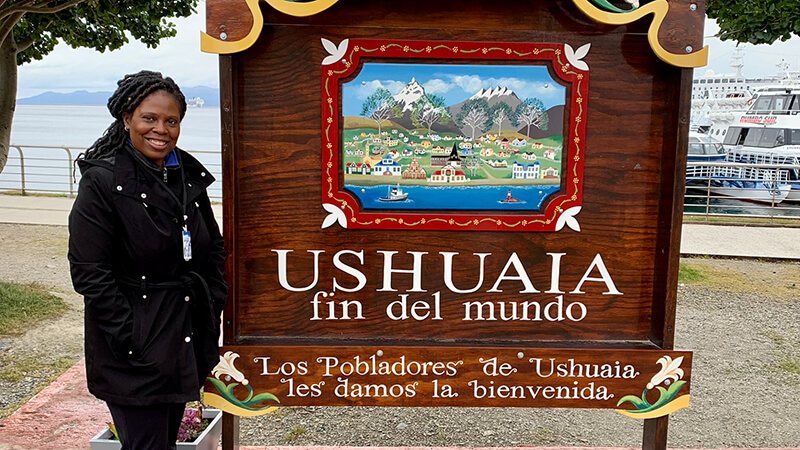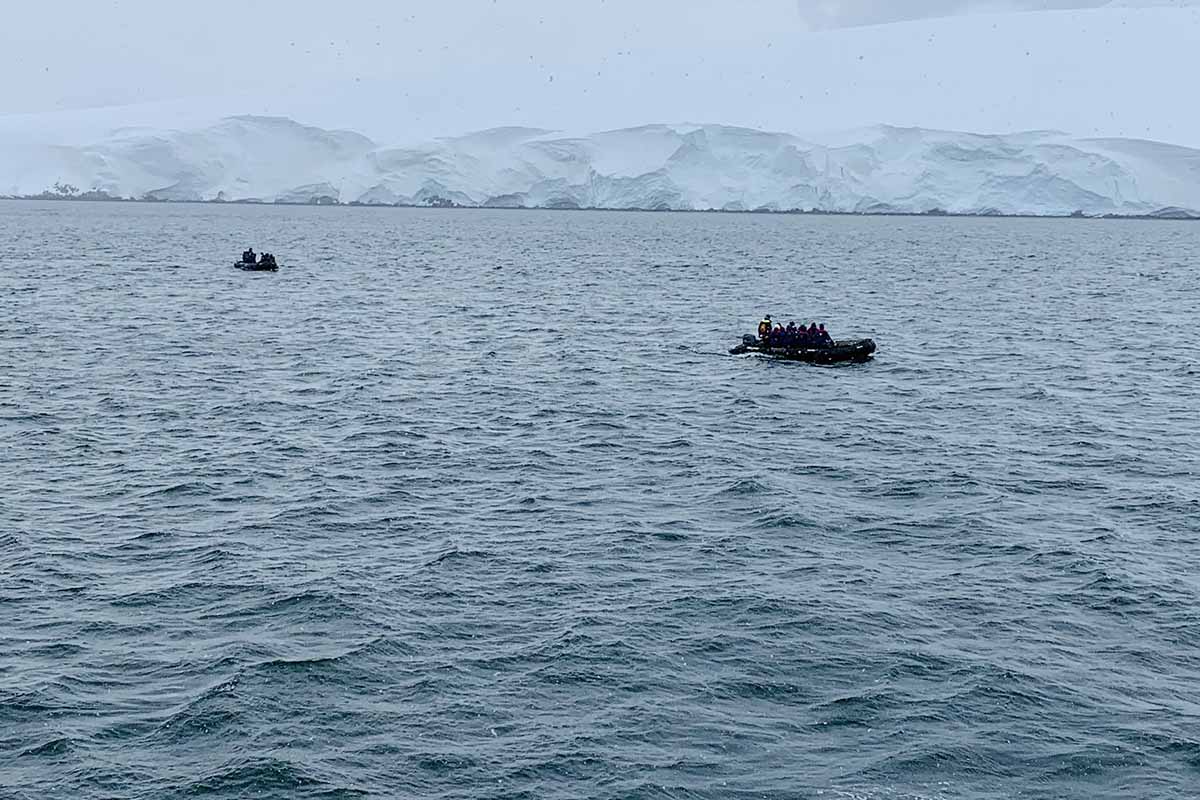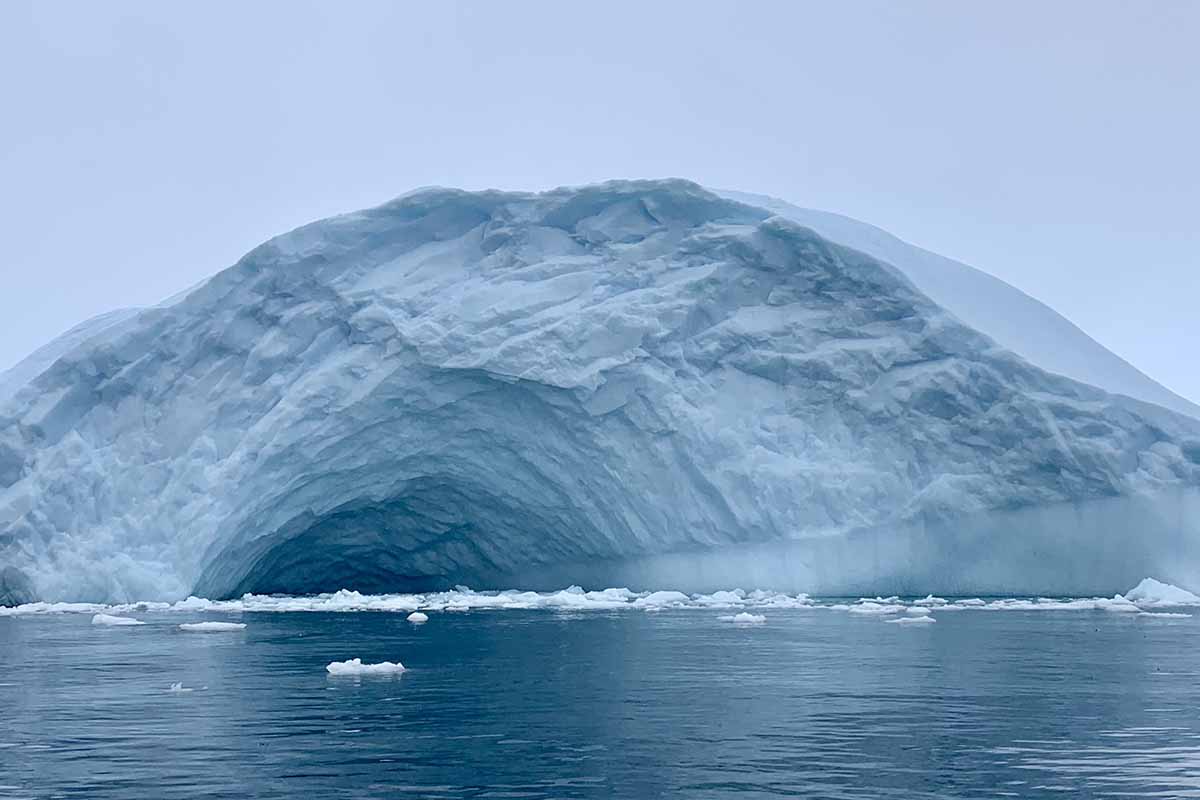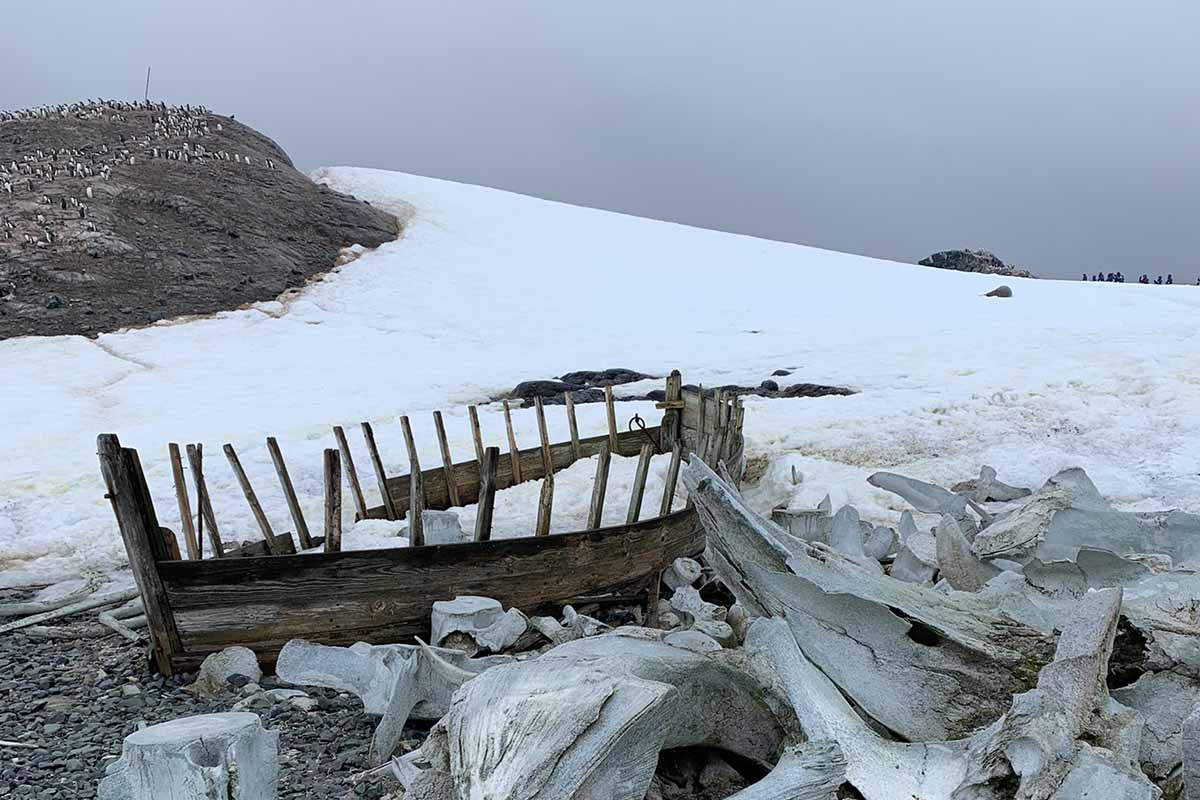“Why Susan? WHY?”
That’s the question people ask about my travels to icy Antarctica. A decade ago, before it was popular to put on your bucket list, I decided to visit all seven continents before I turned 50. Of course, COVID put a damper on that, but the chance to go to Antarctica came quickly and out of the blue, I decided this was the time to do something most people would never have the chance to do.
Antarctica was continent No. 6 on my list—Africa was the first in 2011. I went to Ghana to trace the slave trade with a group of Indiana University students. That trip awakened something in me. To follow the steps of people who were captured, enslaved, and forced to walk to the southern coast, enduring horrific conditions along the way—if they lived that long—was a profound way to experience history.
I realized I had so much more to see and learn. For Antarctica, I didn’t have much prep time, and it wasn’t only about getting the right clothes and equipment. I needed to decide what I wanted to learn on the trip. As someone who has worked for a foundation committed to learning for the past 13 years, I was in the same place as many of today’s students—expanding my horizons and making the most of an educational opportunity.
This was no cruise: It was an expedition. Every day, the guides looked at the weather to determine our routes. Nothing could be planned too far ahead. Though it was summer in Antarctica, layering against the cold and wind was essential. Every day, I put on thermal underwear, leggings, fleece tops, waterproof pants, a parka and scarf, gloves, knit cap, rubber boots, and a life jacket. At night, we had lectures and reflected on the marvelous places we had been. The guides took care to share facts and stories of adventurers, including that of Ernest Shackleton on the Endurance. His ship was recently found in the Weddell Sea along the coast of Antarctica, some 106 years after sinking. I often thought about what pioneers like Shackleton went through on wooden ships through rough seas and bitter cold. Compared to that, my trip was a cakewalk.
My two-week trip in January—the warmest summer month in Antarctica—started in Argentina, from Buenos Aires to Ushuaia, and then Antarctica. As the only African American woman on the ship with about 160 passengers (ranging in age from 13 to 90), I stood out. The countless times I was greeted by staff and crew calling out “Hi Susan” was a little disarming at first. But I’m used to being the only person of color in a room (or on a ship), and I quickly settled into the reason I was there: to embrace the full wonders of Antarctica.
And a wonder it was.
Buenos Aires, Argentina: Where the journey began
The spirit of Eva Perón is alive and well in Argentina. Her image adorns skyscrapers and tourists flock to her grave in the Recoleta Cemetery. At the site of the Pink Palace in the Plaza de Mayo where Evita famously addressed the masses, the culture of protest persists. College is free in Argentina and in talking with the tour guides, paying for your education is seen as less prestigious. That is, if you cannot get into state-run schools and end up having to pay, you are essentially paying for your grades. I told them it’s the opposite in the U.S., where a free education beyond high school is not readily available and is seen by many as less valuable.
Ushuaia, Argentina: The gateway to the Antarctic
Located at the tip of Argentina, Ushuaia is the world’s southernmost city (El Fin Del Mundo). We explored its rich history and beautiful landscape before boarding the Ocean Victory. We got a first glimpse of Tierra del Fuego national park and the Beagle Channel’s sea lions and aquatic birds.
Antarctica: Wonders of the southernmost continent
Crisp air, seals lying on a beach, blue seas, penguins waddling by, deep snow, whales so close I could touch them. Those are just a few of the Antarctic snapshots in my mind. But traveling there during a pandemic was no easy task. I took 10 COVID tests over the course of the trip. As a precaution, we quarantined on the ship for the first two days. Crossing Drake’s Passage, which lies between South America, Chile, and Antarctica, was rough so staying in our rooms was easy. Once out of quarantine, we were taught how to board a zodiac—a large life raft that transported us to and from the ship. On our first day out, we visited Barrientos Island. Riding a zodiac for the first time was both scary and thrilling. After traveling more than 7,200 miles in six days, I was taking full, deep breaths of the Antarctic air and feeling the sea against my face. To step foot on land in the Antarctic and to see (and smell) penguins in their natural habitat—AMAZING. I could hardly believe what I was seeing.
Photo Credit: Jacqueline Deely
Photo Credit: Jacqueline Deely
So, I did a thing. I am not an outdoor person, but I decided to take part in an excursion added late to the trip. Passengers were offered the chance to camp overnight at Portal Point. We would be sleeping without a tent, in the open air, among wildlife. I talked to an adventurous friend before leaving and she said, “You have to do that! How many people get the chance to say they slept on the Antarctic continent?!” I heard her voice as I sat in the orientation session where they described having to dig holes where we’ll put our sleeping bags, not eating or drinking beforehand, and to bring eye masks because it doesn’t get dark. Luckily, it was a warm night, and we were comfortable in our thick sleeping bags. While there were penguins and a leopard seal nearby, we never felt in danger. Crew “stood guard” just in case, but it was crisp and peaceful. A night I’ll never forget.
Photo Credit: Jacqueline Deely
Photo Credit: Jacqueline Deely
Whale watching from the zodiac is my fondest memory. Despite it being the coldest day of the trip, I was so excited I could hardly stop smiling. Humpback whales were feeding off a nearby glacier and meandered in and around us. They were so quiet that I was caught off guard when one swam under us and popped up directly behind me. As we visited other islands in the peninsula, remnants of whale bones and whaling stations reminded us how these magnificent creatures were once hunted. Today, they remain endangered.
Photo Credit: Jacqueline Deely
Photo Credit: Jacqueline Deely
Lifelong learning and finding your joy
My travels have inspired me to learn, work, and enjoy life more fully. When you travel outside the U.S., you gain a greater appreciation of history and how we are all connected. I encourage students to take advantage of all study abroad opportunities. I didn’t have the means to travel abroad when I was a college student, so it took nearly 20 years after graduating before I flew to another continent. So, to students: Go as soon as you can.
This summer I head to France for a trip focused on the African American experience in Paris. And I’m planning a family trip next year to Australia, the final continent on my list.
I love to travel, and when I break from work, I BREAK. No checking email or worrying about assignments. I say this to encourage friends and family to find their joy. Don’t put it off. Ask yourself: “What will it take for me to….?”
I ask students the same question. What would it take to be debt-free, have a credential that helps them do work they love, achieve equitable outcomes, and find their joy? My work at Lumina Foundation is a way for me to help people be lifelong learners and find their personal joy. I found mine on the other side of the earth.


































